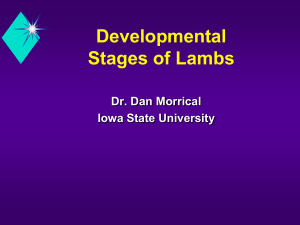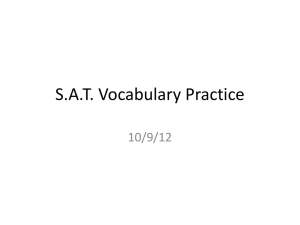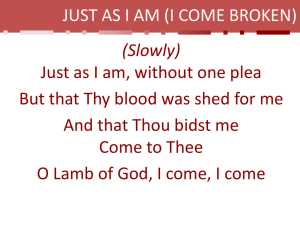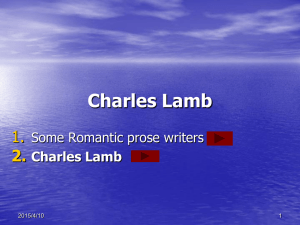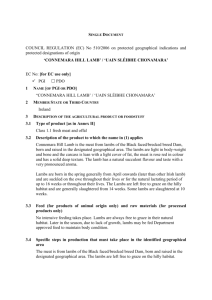Bottle raising lambs - Dairy Flat Veterinary Clinic
advertisement
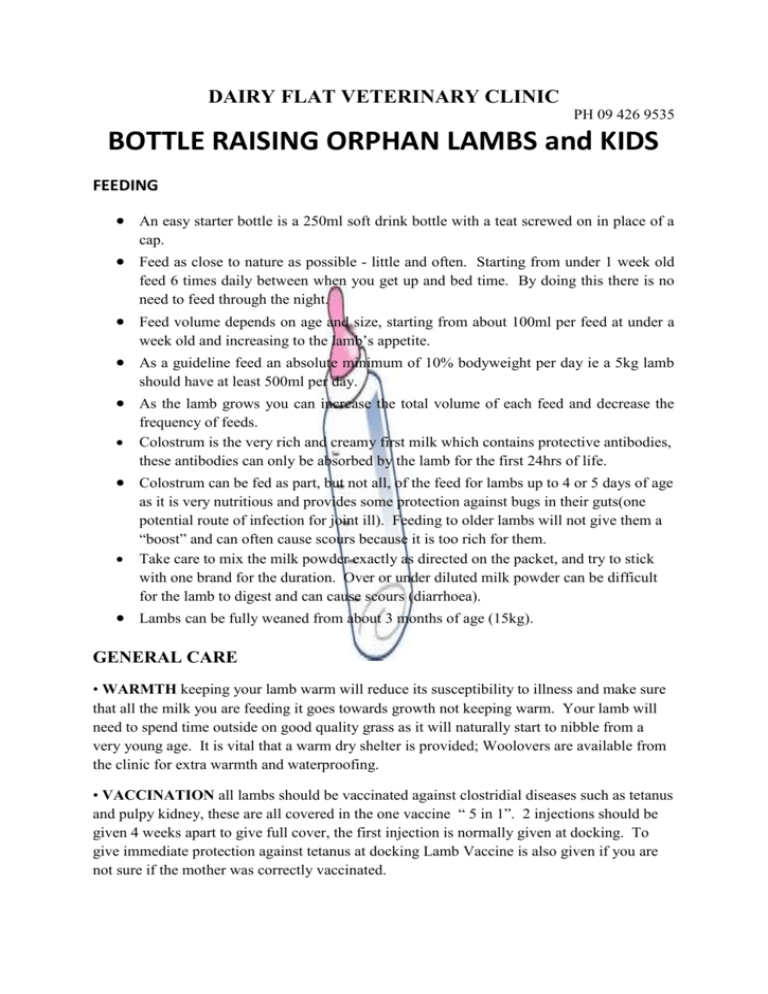
DAIRY FLAT VETERINARY CLINIC PH 09 426 9535 BOTTLE RAISING ORPHAN LAMBS and KIDS FEEDING An easy starter bottle is a 250ml soft drink bottle with a teat screwed on in place of a cap. Feed as close to nature as possible - little and often. Starting from under 1 week old feed 6 times daily between when you get up and bed time. By doing this there is no need to feed through the night. Feed volume depends on age and size, starting from about 100ml per feed at under a week old and increasing to the lamb’s appetite. As a guideline feed an absolute minimum of 10% bodyweight per day ie a 5kg lamb should have at least 500ml per day. As the lamb grows you can increase the total volume of each feed and decrease the frequency of feeds. Colostrum is the very rich and creamy first milk which contains protective antibodies, these antibodies can only be absorbed by the lamb for the first 24hrs of life. Colostrum can be fed as part, but not all, of the feed for lambs up to 4 or 5 days of age as it is very nutritious and provides some protection against bugs in their guts(one potential route of infection for joint ill). Feeding to older lambs will not give them a “boost” and can often cause scours because it is too rich for them. Take care to mix the milk powder exactly as directed on the packet, and try to stick with one brand for the duration. Over or under diluted milk powder can be difficult for the lamb to digest and can cause scours (diarrhoea). Lambs can be fully weaned from about 3 months of age (15kg). GENERAL CARE • WARMTH keeping your lamb warm will reduce its susceptibility to illness and make sure that all the milk you are feeding it goes towards growth not keeping warm. Your lamb will need to spend time outside on good quality grass as it will naturally start to nibble from a very young age. It is vital that a warm dry shelter is provided; Woolovers are available from the clinic for extra warmth and waterproofing. • VACCINATION all lambs should be vaccinated against clostridial diseases such as tetanus and pulpy kidney, these are all covered in the one vaccine “ 5 in 1”. 2 injections should be given 4 weeks apart to give full cover, the first injection is normally given at docking. To give immediate protection against tetanus at docking Lamb Vaccine is also given if you are not sure if the mother was correctly vaccinated. • DOCKING AND RINGING this is the application of rubber bands to the tail and around the testicles so that they drop off. Docking the tail should be done so that there is enough tail left to cover the exposed skin of the perineal area (around the anus and vulva) Care should be taken when ringing the testicles to include all of both testicles (not always as easy as it sounds) and not to include the nipples. Rings can be applied at any age once the lamb is thriving – usually between 1 and 2 weeks old but up to 8 weeks is acceptable, after this pain relief should be given. You can expect your lamb to be off colour for a few hours after the ring has been applied, but should recover within the same day. If you are not happy with the position of the ring cut it off and replace it. If you are not confident of ringing (or vaccinating) the lamb can be brought into the clinic for it to be done instead. HEALTH STOPPING FEEDING – this can be very serious in young lambs as their blood sugars drop very quickly, making them too weak to recover on their own. Check if their body temperature is raised above or dropped below normal (38 – 39.5) and also if their abdomen seems tight and bloated or empty and hollow. HIGH TEMPERATURE AND/OR breathing) suggests a bacterial pneumonia is very common. This veterinary attention. “RATTLES” (noisy infection, needs immediate SCOURING (diarrhoea) there are a number of causes of diarrhoea, most commonly in very young lambs it is a result of over feeding or poor mixing of milk powder. Alternate milk feeds with electrolytes, do not dilute the milk powder with electrolytes as this will not clot in the stomach and make the scours worse. If this does not improve within 24hrs contact the clinic for advice. JOINT/NAVEL ILL– this is when an infection enters the lamb’s body through the umbilicus (belly button) and settles into a joint. Lambs are usually very lame and often run a temperature, this needs immediate veterinary attention. • BLOAT is caused by bacteria producing too much gas in the rumen, the lamb will develop a very tight tummy, especially on the left hand side behind the ribs and be quite uncomfortable. Massaging the abdomen to encourage gas to be passed at either end can relieve the problem, if this does not help then veterinary attention is needed as bloat can lead to a twisted stomach and both conditions can be fatal. • ENTROPION looks like an eye infection but is actually caused by the edge of the eyelid turning in and rubbing on the surface of the eyeball. This is a very painful condition; treatment gives immediate relief and if it is noticed quickly is very simple for the vet to do. • COLLAPSE/WEAKNESS – in very young lambs this can be the result of drop in body temperature (hypothermia) or drop in blood sugar. It requires immediate attention to prevent the lamb falling into a coma. If the lamb’s body temperature is close to normal rub some honey or glucose into it’s mouth to try and raise the blood sugar levels and call the clinic for advice.

